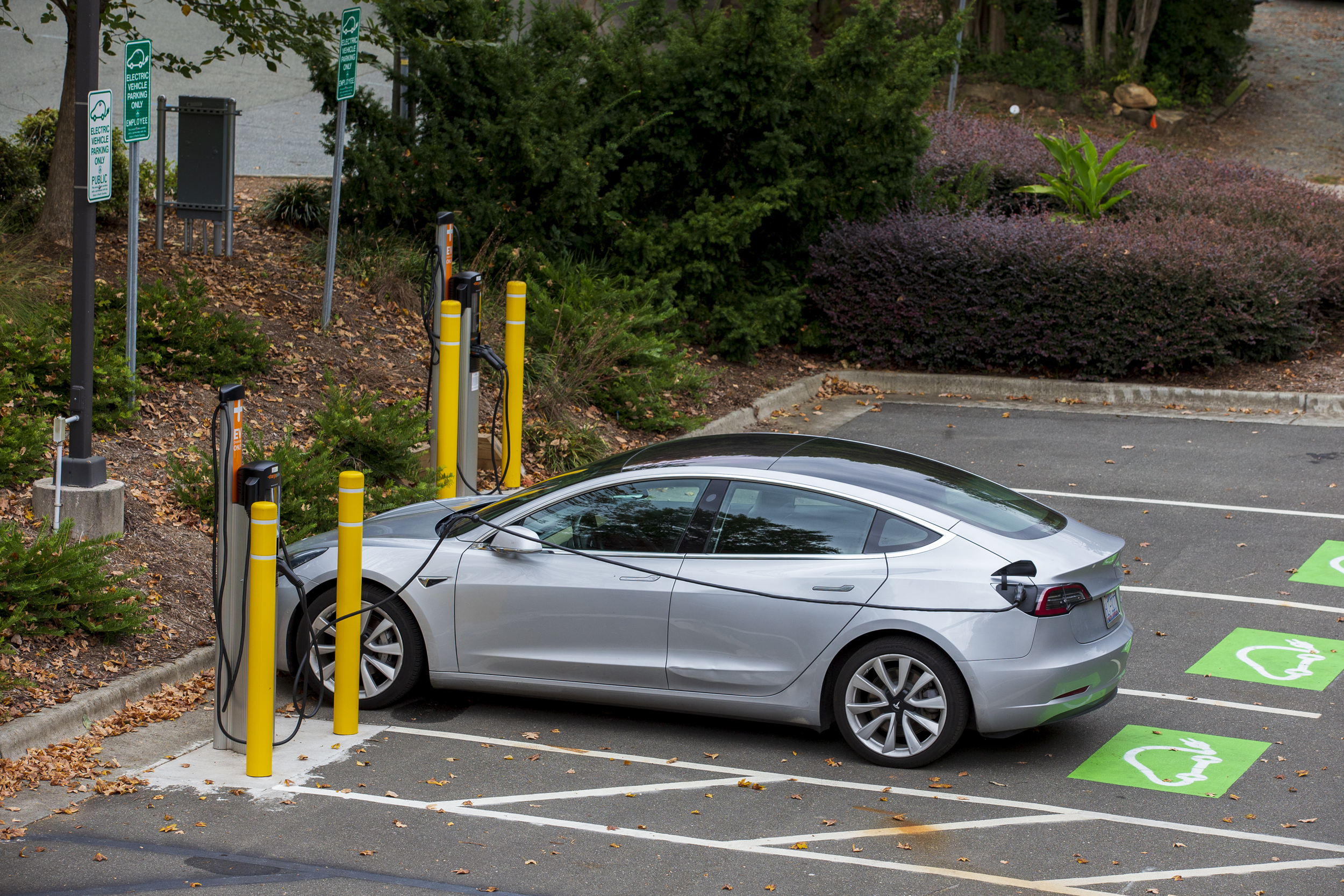Efforts to conserve energy in the Community Center, Town Hall and the Homestead Aquatics Center have reduced the Town of Chapel Hill’s energy bill for the second year in a row, leading to lower costs and a slightly smaller carbon footprint.
By installing LED light bulbs, new insulation and other measures, officials said the town has saved $164,000 in energy costs across the three buildings over two years.
According to the town, that’s the equivalent of saving 1,682 metrics tons of carbon dioxide from being added to the atmosphere or equal to taking 200 gas-powered cars off the road since energy-cutting measure started two years ago.
But new light bulbs are not enough to offset Chapel Hill’s carbon emissions. At the end of the day, town government only represents two percent of energy use across the town, Mayor Pam Hemminger told WCHL’s Aaron Keck.
“Yes, it Is nice. It saves taxpayer dollars; it’s the right thing to do; it sets a good example. But we need to take it further. And this was something that the council galvanized at our retreat, we want to come up with our own climate action plan. We’re not feeling the support from our own federal government.”
And while Duke Energy has been a good partner on energy-saving measures, Hemminger said, they could be a better partner.
Duke Energy’s recent Integrated Resource Plan lays out an overview of its electricity production and where the company sees itself in the next two decades regarding to its energy habits. Local nonprofit and government officials have criticized Duke Energy’s plan, which is now being considered by the NC Utility Commission, for its continued reliance on coal over the next 15 years.
Orange County Commissioner Mark Marcoplos was one of around 40 NC government officials to sign a letter to the Utilities Commission asking them to rule against the plan.
But nonprofit NC WARN said Duke Energy’s proposed plan maintains a heavy reliance on coal over the next two decades and includes considerations for the increased burning of gas from fracking. According to their outline, in 2033, Duke Energy Carolinas will get 16 percent of its total electrical power from renewable resources and energy efficiency measures, like those taken by the Town of Chapel Hill’s City Hall and Community Center.
NC WARN cited several utilities companies across the country that of last year already receive 30 percent or more of their power from renewable sources alone.
Related Stories
‹

Damage from Tropical Storm Debby Leads to Power Outages in Orange, Durham and Chatham CountiesAs the storm moved through North Carolina on Thursday, several communities in Orange, Chatham and Durham Counties reported losing power.

Town of Chapel Hill Announces New Fees for Electric Vehicle ChargingThe Town of Chapel Hill announced it will begin charging a minor fee at its public electric vehicle charging stations in August.

Chapel Hill: E. Franklin Street Reopened After Lengthy Closure from Fallen Tree, Power LinesUPDATE: The Town of Chapel Hill reopened East Franklin Street at its intersection with Elliott Road around 2 p.m. on Wednesday. The local government said cleanup crews are still working in the area of North Elliott Road, which does remain closed in both directions in front of Chapel Hill Fire Station 3. Duke Energy reported […]

Power Outages Continue for Chapel Hill, Durham Residents; Police Share Road Closure UpdatesUPDATE: In the wake of a severe storm, many residents in Chapel Hill and Durham remained without power on Wednesday morning, and local emergency services and governments continued to provide closure information and safety tips. Durham County, which energy provider Duke Energy said was one of the hardest-hit areas in North Carolina from high winds, […]

Adverse Weather Leads to Flood Warning, Power Outages in Orange and Chatham CountiesThe string of storms moving across the southeast caused some adverse conditions in the Triangle, with Chapel Hill, Carrboro and Durham among the areas issued alerts from the National Weather Service. A flash flood warning was in effect for several hours on Friday in the towns, as rain caused rapid rises in creeks and streams. […]

Downed Power Lines Briefly Divert Traffic, Cause Outage Along E. Franklin StreetA downed power line along a popular Chapel Hill road means traffic briefly diverted traffic on Tuesday morning as repairs were made. An alert shared by the Town of Chapel Hill said a stretch of East Franklin Street was closed after a truck snagged nearby utility lines and dragged them down. Police closed the road […]

Duke Energy Restores Power for 2K Customers in East Chapel HillUPDATE: Duke Energy shared that the outage was resolved shortly before 3 p.m. A power outage along the Chapel Hill-Durham line is causing some issues for hundreds of residents. Duke Energy reported an outage in the Falconbridge and Downing Creek neighborhoods and along parts of Farrington Road, saying around 1,900 customers are experiencing a loss […]

Downed Tree Causes Power Outages, Forces Closure of Country Club Road in Chapel HillUPDATE: As of 7:30 p.m., Duke Energy says power has been restored along Raleigh Road and in the surrounding areas of UNC campus. Country Club Road on the UNC campus in Chapel Hill is closed due to a downed tree on a power line, according to the Chapel Hill Police. #CHtraffic Alert: Country Club Rd […]

Fallen Tree Along Franklin Street Knocks Out Chapel Hill PowerEditor’s Note: This story has been updated to reflect power being restored for those customers affected on Monday. Nearly 2,000 Duke Energy customers experienced a power outage in Chapel Hill Monday morning due to a fallen tree on a power line. A message from the Chapel Hill Police Department alerted the community to the fallen […]

Thousands Lose Power, Roads Get Closed in Orange County Due to Winter StormUPDATE: This story has been updated Monday evening with additional information about some power restoration in Hillsborough and Tuesday’s weather forecast. A winter storm that swept across North Carolina left several thousand Orange County residents without power Monday morning, as the forecast turned even colder. Heavy rain, strong winds and thunderstorms arrived in the region […]
›












